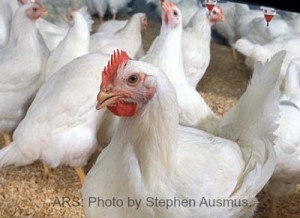The Centers for Disease Control and Prevention (CDC) has issued an official health advisory about recommendations for human health over the highly-pathogenic avian influenza A (H5N2), (H5N8) and (H5N1) viruses, known as HPAI H5. There have been more than 200 findings of birds infected with these viruses. More than 40,000,000 birds in 20 states have been affected, mostly in poultry backyard and commercial flocks.
 These are the first reported infections with these specific viruses in U.S. wild or domestic birds. No human illnesses have been reported to date, but since the virus has been found in this country, the advisory states “their appearance in North American birds may increase the likelihood of human infection in the United States.”
These are the first reported infections with these specific viruses in U.S. wild or domestic birds. No human illnesses have been reported to date, but since the virus has been found in this country, the advisory states “their appearance in North American birds may increase the likelihood of human infection in the United States.”
Human infections with avian flu have occurred in other parts of the world. The H5N1 virus in Asian and Africa “has been associated with severe, sometimes fatal, disease” according to the report.
Human infections occur after unprotected direct physical contact with infected birds or surfaces contaminated by the viruses, being in close proximity to infected birds, or visiting a live poultry market. So far, human infection with avian influenza viruses has not occurred from eating properly cooked poultry or poultry products. All poultry should be cooked to 165°F as measured by a meat thermometer to be safe to eat.
CDC considers the risk to the general public to be low. But people who do have close or prolonged contact with infected birds may be at greater risk for infection. CDC does consider these newly-identified viruses as having the potential to cause severe disease in people.
The recommendations include: doctors should consider the possibility of HPAI H5 virus infection in people who show signs of a respiratory illness who have relevant exposure history. That includes people who have contact with potentially infected birds, including handling, slaughtering, defeathering, butchering, culling, and preparing for consumption; direct contact with surfaces contaminated with feces or parts of the birds; and people who have prolonged exposure to potentially-infected birds in a confined space.
State health departments are encouraged to investigate potential human cases and should notify the CDC within 24 hours after identifying a case under investigation. Rapid detection and characterization of the virus in humans is a critical component to prevent the spread of the illness.
People should avoid unprotected exposure to sick or dead birds, bird feces, litter, or materials contaminated with suspected or confirmed HPAI H5 viruses. Personal protective equipment (PPE) should be worn when in direct or close contact (within about 6 feet) of sick or dead poultry, feces, littler, or contaminated materials. And workers should be trained on how to use the protective clothing, what is necessary, and how to properly put on, use, take off, properly dispose of, and maintain PPE.
People exposed to HPAI H5-infected birds, including those wearing protective clothing, should be monitored for signs and symptoms of the flu beginning after their first exposure and for 10 days after they last exposure. Prophylaxis may be considered to prevent infection.
No human vaccines for these viruses are available. The government is working to develop these vaccines. Seasonal flu vaccines do not provide any protection against the HAPI H5 viruses.




